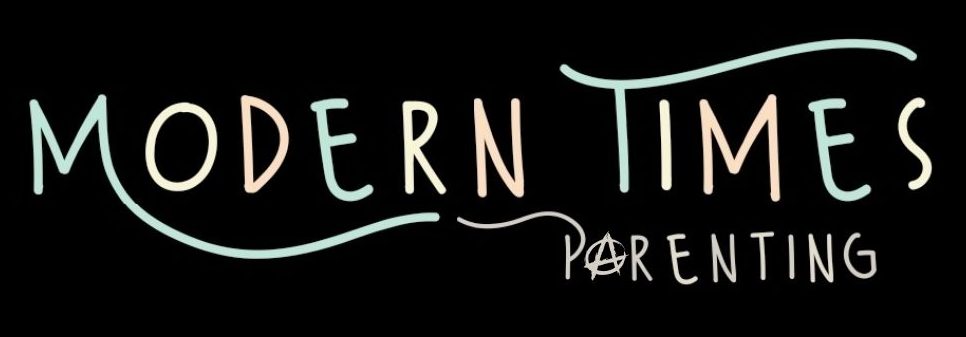
NAP Time: A Case Against Spanking
One of the main tenets of the philosophy here at Modern Times is a principle known as the NAP. No, not the sweet, sweet, quiet, time you get when the little ones are sleeping in the afternoon. This NAP is the non-aggression principle. It can be defined as the idea that the act of initiating aggression onto another person or person’s property is unethical. It’s a lifelong philosophy of “don’t hurt people and don’t take their stuff.” This sounds like an obvious principle to live by, but the kicker is that this applies to everyone regardless of their age, title, relationship, etc. We teach our children not to hit other kids and to not take other kids’ toys. But sometimes we forget to apply this idea to our parenting style, or we think we are above living by this principle ourselves.
It is obvious that physically abusing children is wrong. But a controversial topic in the parenting sphere is the idea of using corporal or physical punishment to discipline our children, which includes something as seemingly harmless as a spanking. Spanking children is a violation of the NAP, regardless of the age of the child. It is an initiation of aggression onto the child, whether the parents are doing it in an act of passion right when the child is doing something “wrong”, or whether the parents are doing it at a later time after explaining to the child that their behavior was “wrong”.
Before I get much further into this, I do want to highlight that if a parent does lightly spank their children for punishment, it doesn’t mean we think those parents are abusive or “bad” parents. It is simply against our parenting philosophy. The goal here isn’t to judge parents who do spank, but to get those parents to try to shift their perspective relating to their child as a sovereign individual, to consider the unintended consequences of breaching the NAP in this circumstance, and to reassess whether this practice is beneficial to the child in any way.
The way we look at it is like this, physically hitting a child to try to mold their behavior is a way to essentially scare them into respecting parental authority. It is also not within our authority as parents to violate a child’s body by hitting them. Let’s look at a few scenarios:
- 5-year-old Emma refuses to eat her lunch for the third day in a row. As a parent, this is frustrating because Mom takes the time to make Emma’s food, and she also needs her to eat to be well nourished. Mom warns Emma that if she doesn’t eat her lunch today, she will be spanked because of her behavior. Mom doesn’t spank often, but when it comes to the child’s nutrition, it is a matter of creating good eating habits and Mom also believes that Emma must learn to respect the work and time that goes into making her lunch.
First, the most important thing to do when trying to solve a behavioral issue such as refusing to eat, is to assess why the child is acting this way. Of course, when we’re sleep-deprived, frustrated because of other life factors, etc., it’s not something we are always good at doing in the moment. Sometimes it is best to let it go in the moment and think about it when we have a clear head. So, let’s think about it now: why isn’t Emma eating? Has something changed in her life recently? Often, what we see as “bad” behavior is a cry for attention. Is there a new sibling? Have we as parents been spending a lot of time recently on work or other non-parenting activities? It is essential to understand the root cause of the problem because then we can take a much more effective approach to guiding the child back to the positive behavior.
Second, would spanking the child guide them back to the positive behavior? It absolutely might in the short-term, but at what cost? What would be some unintended consequences of doing so? Perhaps Emma wasn’t eating because whatever food was being made upset her stomach. Perhaps she wasn’t eating because she needs Mom’s attention (yes, children need their parents’ attention more than we sometimes like.) So, Mom spanks Emma genuinely believing it is the right thing to do. Emma starts eating lunch again. But now, Emma is scared because her stomach hurts, but she doesn’t tell her mom because she doesn’t want to get spanked again. Or maybe Emma stops seeking her mom’s attention because she doesn’t want to get spanked again. If that is the case and it happens frequently enough, Emma may become an adult who doesn’t believe she is worth the attention of a loved one.
Now, let’s look at one of the most common examples of when parents choose to spank:
- The mailbox for 4-year-old Lysander’s house is across the street. Mom tells Lysander to stay in the driveway while she checks the mail. Lysander finds a cool rock and decides he needs to show Mom right away, so he runs across the street to show her. At the same time, a car is slowly driving down the road. Lysander sees the car, gets scared and stumbles over in the middle of the street. The car stops, Mom runs to get Lysander, and walks safely across the street. Everyone is OK.
Mom is really flustered first and foremost, because Lysander could have been seriously hurt had the driver in that car not been paying attention. Second, she’s upset because Lysander didn’t follow her instructions to stay in the driveway. Lysander is also really scared because he fell and scraped his knee.
Many parents believe that it would be justifiable and worthwhile to spank little Lysander in this instance. As parents, it is our job to teach our children basic safety rules and to keep them from harm. If Mom chooses to spank Lysander right away, amidst high emotions, what are the benefits and what are the negative consequences? The benefit might be that it scares Lysander into never doing that ever again. We never want our children to run into the street. However, there are also negative consequences:
- What does it teach our children to act out aggression in the heat of high emotion? Mom is upset and Lysander is scared. Neither are in the right frame of mind to be teaching a “lesson” or learning from a “lesson.” It also demonstrates to the very impressionable child that it’s acceptable to use physical aggression in a panic.
- Lysander is also hurt. His knee is scraped. So now, because kids at such a young age may have a difficult time reasoning actions to consequences, they tend to make associations to understand the world. So now he may think that when he falls and gets hurt, if Mom knows about it, she might be upset with him so he may try to hide it from her in the future. As parents, it’s important for us to allow our children to be open with us when they are hurt, even if they get hurt doing “something wrong.”
Let’s not forget that keeping our children safe is our responsibility as parents. It is just as much Mom’s fault that Lysander ran into the road as it is his, maybe more so. Mom should have either brought Lysander safely across the street with her or kept him inside the house while she checked the mail.
This brings me to a couple last points regarding spanking, or physical punishment in general. A good rule of thumb is if it would not be acceptable to do to an adult, it is also not acceptable to do to a child. Would it be acceptable for Dad to spank Mom because she slipped up and didn’t keep Lysander safe for that moment? Of course not. Any act of aggression is unacceptable to do to another person. So, it is also unacceptable to do to a child.
But, as many parents believe, children do not understand reason, so we must spank them so they association a negative consequence with their “bad” behavior, right? Well, no. As shown above, that association technique can backfire and cause them to disassociate with some positive behaviors. It is also important to remember that if children do not understand logical reasoning, they will not understand the reason their parents are hitting them. It’s important to note that logical reasoning starts as young as 2-years-old. Let’s try to give our children a bit more credit and attempt to reason with them. They’re much smarter than society gives them credit for.
The bigger picture here is to think about what kind of adults we want our children to grow up to be. For one, it teaches children that using aggression is an acceptable way to solve problems. Also, if we use corporal punishment to get children to obey, they are more likely to accept that behavior as adults. They’ll go through life thinking it’s ok for teachers, bosses, police officers, etc. to use aggression simply because they are “authority” figures. This makes for a very submissive society, one ripe for abuse.
For those who may be interested, here are a few studies regarding the effects of spanking in children long-term:
SRCD: Corporal Punishment and Elevated Neural Response to Threat in Children
https://srcd.onlinelibrary.wiley.com/doi/abs/10.1111/cdev.13565
CMAJ: Physical punishment of children: lessons from 20 years of research
https://www.ncbi.nlm.nih.gov/pmc/articles/PMC3447048/
JFP: Spanking and child outcomes: Old controversies and new meta-analyses
https://doi.apa.org/doiLanding?doi=10.1037%2Ffam0000191
